|
Capital: Population: Majority: Government: Religions: Exports: |
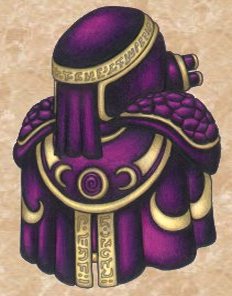 Vauz
Vauz Unknown
Undead
Autocracy
Koz (the Eater)
None
It was the great celestial leviathan, Halus, who finally came to fight the Creators during the last days of the War. His bretheren dead, his spiritual realm in ruins, he descended upon the world he had created with the grief and fury of a deity, seeking to destroy the City Mind. For days, Halus and Nigh fought high above the world, and their titanic battle rained disaster down upon the Creators. Too late, they came to understand that their City Mind inteded to win at any cost, regardless of whether or not their race endured its efforts. Halus' death marked the end of the Twilight War; the impact of his crash shook the very world.
When Halus died, his body fell into the sea and formed what is now called 'Endland', destroying most of the hyperspan causeways that bridged the southern islands in the process. The entire region is littered with the leviathan's remains, and barely a scrap of life can be found amid the crumbling fragments. Dunes of sterile bone dust form powdery white deserts amid the great, mountainous vertibrae that dictate the basic layout of the islands. The unnatural circular formation is actually Halus' tail. To the north, across the skeletal reefs and whalebone graveyards, the borders of Midland slowly buckle under the Spiral's steady encroachment. Even those few slavers brave enough to sell their captives to the Spiral rarely venture past these faltering borderlands, trading their wares in the slum town of Harrow.
It is here that the Spiral sport their greatest influence, amid the ruin and despair. They chose this region to build their last collector, the salt hive, Vauz. Of all three alien structures, Vauz is the most difficult to reach, and surely the most difficult to attack. Koz influence runs unchallenged through the entire island chain, and it is possible that their power is further strengthened by the residual hatred of the long-dead god. The white dust, awzil (ow-zil), is a combination of Halus' spinal bone powder and an alchemical agent that allows it to dissolve into the blood of living beings. Like the black dust, chith, awzil is used to subvert minds, infusing even the most innocent soul with a breath of the dead god's fury.

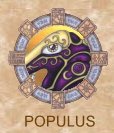
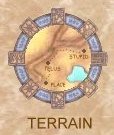
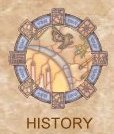
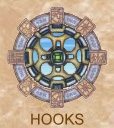

DYING VELDT
The corruptive sickness spreading from the southern lands has reached the ancestral home of the skoles, and as the years go by, the Wasting has caused this terrain to slowly lose its hues. The life here is listless and infertile, its vibrance growing dim as the Eater's taint soaks into the land. Ruins of ancient skole cities dot the veldt in many places, most now overrun with czath.

BONE DESERT
Bone desert occurs in regions where Halus' skeleton have been most heavily erroded. Unlike conventional rocky or sandy deserts, these dunes are composed of light, gritty calcium powder. Due to its nature, it can be animated and controlled to some extent by the Eater's minions, conjured into shambling elementals known as Dust Hulks. Bone deserts support no life at all, save the twisted servants of the Spiral.

POISONOUS OCEAN
The Salt Hive has been contaminating these waters for centuries, killing a widening radius of marine life with clouds of mineral toxin washed from its surface. The area around the Collector and a great portion of the reefs to the north have become lifeless and barren, and any who venture into these waters unprotected will quickly sicken and die.
REGIONAL ARCHITECTURE
Endland is a desolate waste, poisoned by the fallen god and the undead horrors that feed upon him. These fell creatures, the Spiral and their ilk, are the only beings that can survive here for long, and thus the only ones to settle this region. Spiral architecture is unlike anything else on Rym, their spartan cities linked by dusty supply trails that stretch across the bone deserts and searing wasteland. Their minimal living requirements allow the undead a disturbing level of efficiency, their tireless efforts evident in the consistant, orderly movement of supplies throughout their kingdom, carried on the backs of undead slaves. Spiral buildings show no individuality other than dimension, without windows or decoration of any kind. Only the most basic identification marks can be found. This sterile organization gives Spiral cities a very stark, alien look, even if one doesn't take into account the gaunt, skeletal inhabitants.